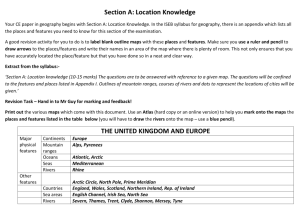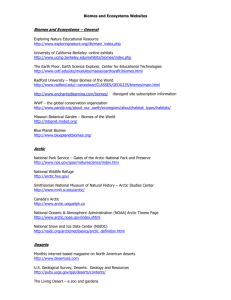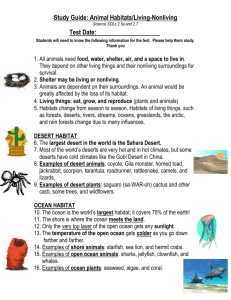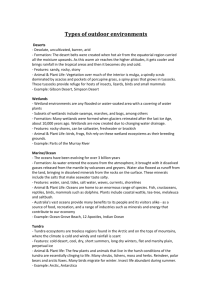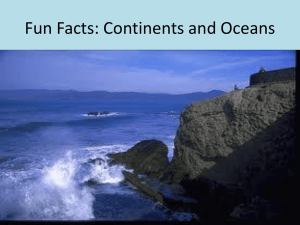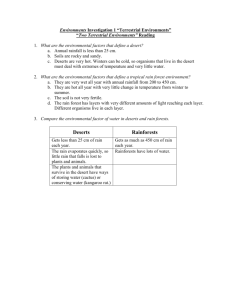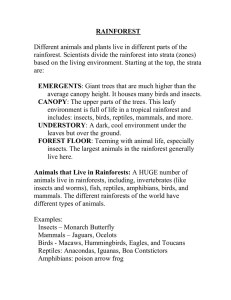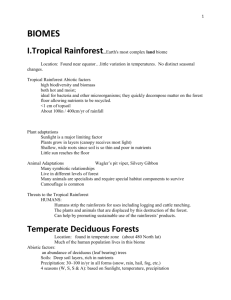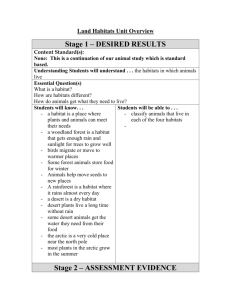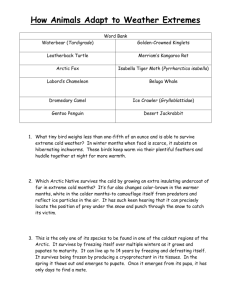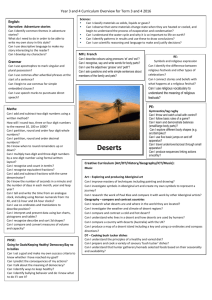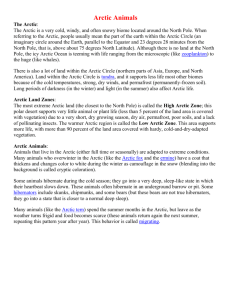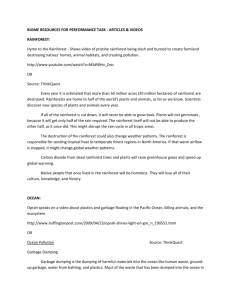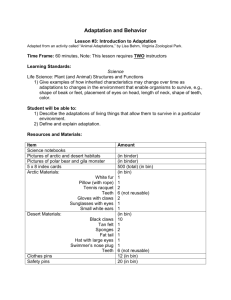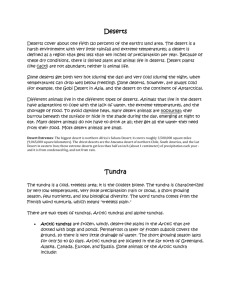NATURAL REGION LOCATION MAIN CHARACTERISTIC CLIMATE
advertisement
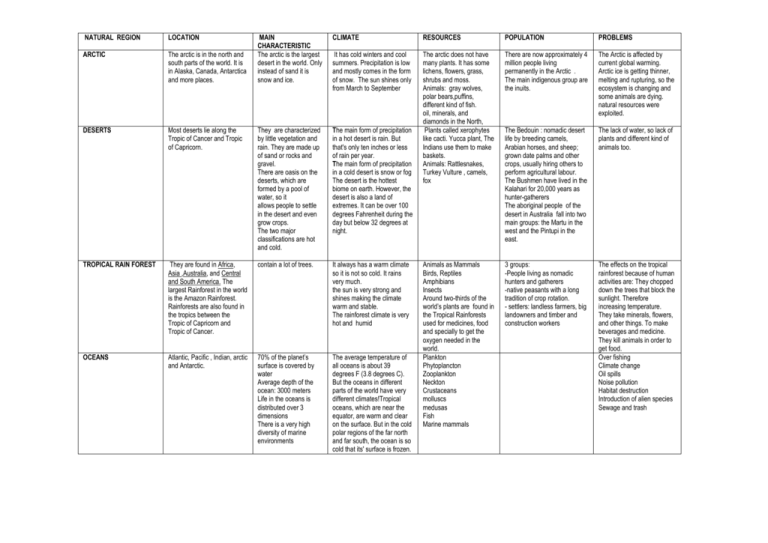
NATURAL REGION LOCATION MAIN CHARACTERISTIC The arctic is the largest desert in the world. Only instead of sand it is snow and ice. CLIMATE RESOURCES POPULATION PROBLEMS ARCTIC The arctic is in the north and south parts of the world. It is in Alaska, Canada, Antarctica and more places. It has cold winters and cool summers. Precipitation is low and mostly comes in the form of snow. The sun shines only from March to September There are now approximately 4 million people living permanently in the Arctic . The main indigenous group are the inuits. The Arctic is affected by current global warming. Arctic ice is getting thinner, melting and rupturing, so the ecosystem is changing and some animals are dying. natural resources were exploited. Most deserts lie along the Tropic of Cancer and Tropic of Capricorn. They are characterized by little vegetation and rain. They are made up of sand or rocks and gravel. There are oasis on the deserts, which are formed by a pool of water, so it allows people to settle in the desert and even grow crops. The two major classifications are hot and cold. The main form of precipitation in a hot desert is rain. But that's only ten inches or less of rain per year. The main form of precipitation in a cold desert is snow or fog The desert is the hottest biome on earth. However, the desert is also a land of extremes. It can be over 100 degrees Fahrenheit during the day but below 32 degrees at night. The arctic does not have many plants. It has some lichens, flowers, grass, shrubs and moss. Animals: gray wolves, polar bears,puffins, different kind of fish. oil, minerals, and diamonds in the North, Plants called xerophytes like cacti. Yucca plant, The Indians use them to make baskets. Animals: Rattlesnakes, Turkey Vulture , camels, fox DESERTS The Bedouin : nomadic desert life by breeding camels, Arabian horses, and sheep; grown date palms and other crops, usually hiring others to perform agricultural labour. The Bushmen have lived in the Kalahari for 20,000 years as hunter-gatherers The aboriginal people of the desert in Australia fall into two main groups: the Martu in the west and the Pintupi in the east. The lack of water, so lack of plants and different kind of animals too. TROPICAL RAIN FOREST They are found in Africa, Asia ,Australia, and Central and South America. The largest Rainforest in the world is the Amazon Rainforest. Rainforests are also found in the tropics between the Tropic of Capricorn and Tropic of Cancer. contain a lot of trees. It always has a warm climate so it is not so cold. It rains very much. the sun is very strong and shines making the climate warm and stable. The rainforest climate is very hot and humid 3 groups: -People living as nomadic hunters and gatherers -native peasants with a long tradition of crop rotation. - settlers: landless farmers, big landowners and timber and construction workers OCEANS Atlantic, Pacific , Indian, arctic and Antarctic. 70% of the planet’s surface is covered by water Average depth of the ocean: 3000 meters Life in the oceans is distributed over 3 dimensions There is a very high diversity of marine environments The average temperature of all oceans is about 39 degrees F (3.8 degrees C). But the oceans in different parts of the world have very different climates!Tropical oceans, which are near the equator, are warm and clear on the surface. But in the cold polar regions of the far north and far south, the ocean is so cold that its' surface is frozen. Animals as Mammals Birds, Reptiles Amphibians Insects Around two-thirds of the world’s plants are found in the Tropical Rainforests used for medicines, food and specially to get the oxygen needed in the world. Plankton Phytoplancton Zooplankton Neckton Crustaceans molluscs medusas Fish Marine mammals The effects on the tropical rainforest because of human activities are: They chopped down the trees that block the sunlight. Therefore increasing temperature. They take minerals, flowers, and other things. To make beverages and medicine. They kill animals in order to get food. Over fishing Climate change Oil spills Noise pollution Habitat destruction Introduction of alien species Sewage and trash

